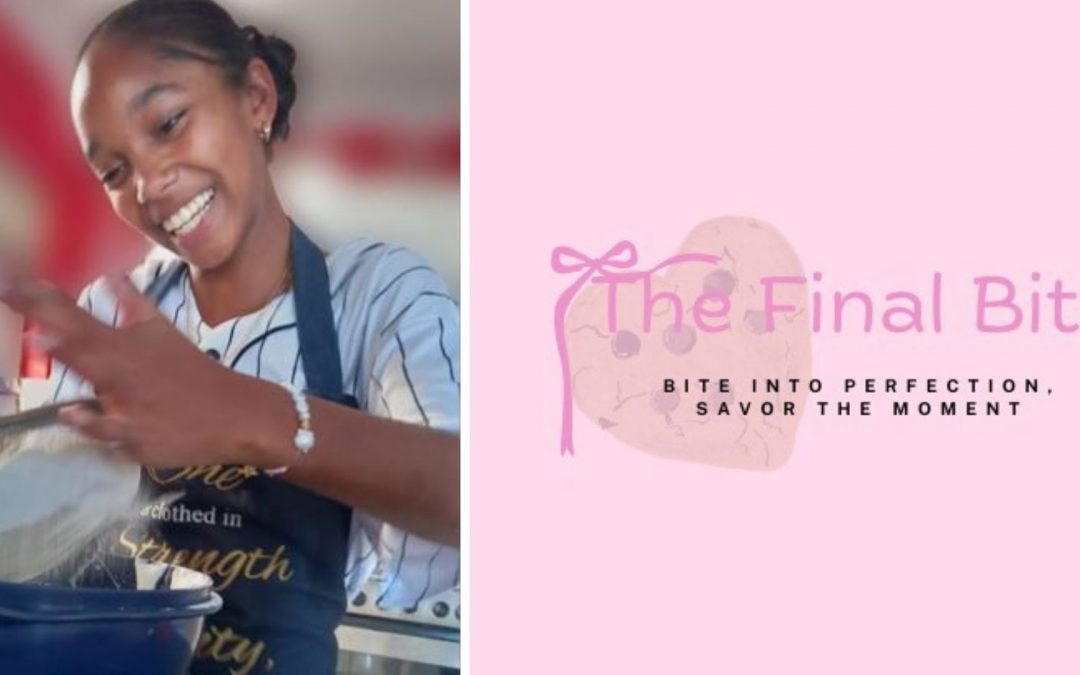
by Tessa Van Rensberg | Dec 15, 2025 | Uncategorised
When 13-year-old Zeeva, from Cape Town, steps into the kitchen, something magical happens. The world quiets, the noise fades, and her mind settles into a calm, joyful rhythm only baking seems to unlock. Mixing, measuring, scooping, and shaping, this is her happy place, the one where she feels most centered, creative, and fully herself.
And at the centre of it all is a dream she’s been nurturing since she was just eight years old:
to build her very own cookie business, The Final Bite, and share her “best cookies you’ll ever taste” far beyond her home kitchen.
Today, that dream is taking its biggest step yet.
A Sweet Soul With a Big Vision
To her mom, Melvina, Zeeva is more than just a talented young baker. She’s gentle, kind, determined, and quietly resilient, the kind of girl who cleans the kitchen after a baking fail and says,
“It’s okay, Mommy, I’ll try again.”
“She has this soft nature,” Melvina says, “but once she sets her mind on something, she gives it her whole heart. She’s my little bestie, my shadow, and honestly, my teacher in so many ways.”
And the dream she holds isn’t just about cookies. It’s about confidence. Creativity. Purpose.
It’s about watching a young girl step into who she was made to be, one batch at a time.
Where It All Began: The Accidental First Bake
Like many great baking origin stories, Zeeva’s includes laughter, a little chaos, and a surprising success.
She remembers baking classic choc-chip cookies with her aunt during a family visit from America. Zeeva confidently read out the ingredients list… not the method… and her aunt added everything exactly as she spoke. Midway through, they burst into laughter, realizing something was very wrong.
But the cookies?
They turned out delicious.
That moment lit something inside her, a spark of joy, creativity, and possibility.
“I loved it,” she says. “It just felt right. Baking makes me feel peaceful and happy.”
From Home Treats to a Budding Cookie Brand
Since then, Zeeva has spent hundreds of hours perfecting her recipes. Her signature crumble-style cookies have become a favourite among friends, teachers, and family. She experiments with flavours, textures, and toppings, always chasing that perfect “final bite”, the one you wish would never end.
She dreams of building a small business, sharing beauty and joy through every batch, and eventually becoming the go-to cookie creator in town.

Her mom has watched the transformation in real time.
“It’s emotional,” Melvina says. “I’ve seen her confidence bloom. She explains her ideas with passion. She packs her cookies with such care. It feels like watching her grow into her God-given gifts.”
Faith is deeply woven into this journey.
“I pray over her hands, her ideas, her confidence,” Melvina adds. “I believe God placed this gift inside her, and my job is to nurture it.”
A Full-Circle Moment: Why BackaBuddy Felt Like Home
Melvina works at BackaBuddy, helping campaign creators find hope and possibility in their hardest moments. She has supported hundreds of people in telling their stories, reaching their communities, and believing in second chances.
Starting a campaign for her own daughter felt like a special full-circle moment.
“I’ve guided so many people through their fundraising journeys,” she says. “When Zeeva was ready to take her dream seriously, I knew BackaBuddy was the perfect place. I’ve seen how kindness gathers, how people show up for something meaningful. I wanted Zeeva to experience that too.”
And so, The Final Bite campaign was born, a chance for the community to help a young entrepreneur take her first real step into business.
What Zeeva Needs To Grow Her Cookie Business
To bring her vision to life, Zeeva needs a few essential tools — the kind that help transform big dreams into beautiful bakes.
In a beautiful turn of events, Zeeva was recently blessed with a stand mixer, generously gifted just when she needed it most. But just as she was preparing to advertise her Christmas cookies, their home oven unexpectedly broke, bringing her plans to a sudden pause.
Right now, the most urgent need is a reliable baking oven — the heart of any cookie business, and the one thing Zeeva needs to keep baking, growing, and sharing her creations.
The funds raised will help cover:
-
Baking oven (essential for consistent, reliable baking)
-
Measuring cups & spoons — R150
-
Mixing bowls (set of 3) — R250
-
Spatulas, whisks, wooden spoons — R200
-
High-quality baking trays (2–4) — R500
-
Cooling racks (set of 2) — R300
-
Silicone baking mats / baking paper — R300
-
Starter stock of key ingredients — R2,000
-
Packaging (boxes, ribbons, stickers) — R500
The goal remains R12,000, covering the oven and all the essentials Zeeva needs to take The Final Bite from a home hobby to a small, thriving business — just in time for her first festive cookie season.
A Young Entrepreneur With a Big Heart
When asked what makes her cookies special, Zeeva’s answer is simple and sincere:
“They’re decadent, filled with love, and made to be affordable so everyone can enjoy them.”
Her biggest supporters?
Her friends, who cheer her on, order cookies, and hype her up every step of the way, and of course, her family, who have been her foundation.
Outside the kitchen, she’s a proud soccer lover and a devoted Manchester United fan. But in the kitchen, she is something else entirely, a creator, an artist, an entrepreneur in the making.
Help a Young Dreamer Rise
Right now, The Final Bite is at the very beginning of something special. Zeeva is ready to grow her skills, build her brand, and share her joyful creations with more people, but she can’t do it alone.
By donating, sharing the campaign, or simply cheering her on, you’re helping a 13-year-old girl discover her potential and step boldly into her dreams.
Every spatula, every tray, every ingredient…
Every contribution moves her closer to the dream God placed on her heart.
And who knows? One day, “The Final Bite” may be the cookie Cape Town, or even South Africa, can’t stop talking about.
Support The Final Bite
Help Zeeva take her next big step as a young entrepreneur:
👉 https://www.backabuddy.co.za/campaign/the-final-bite-back-a-young-cookie-boss
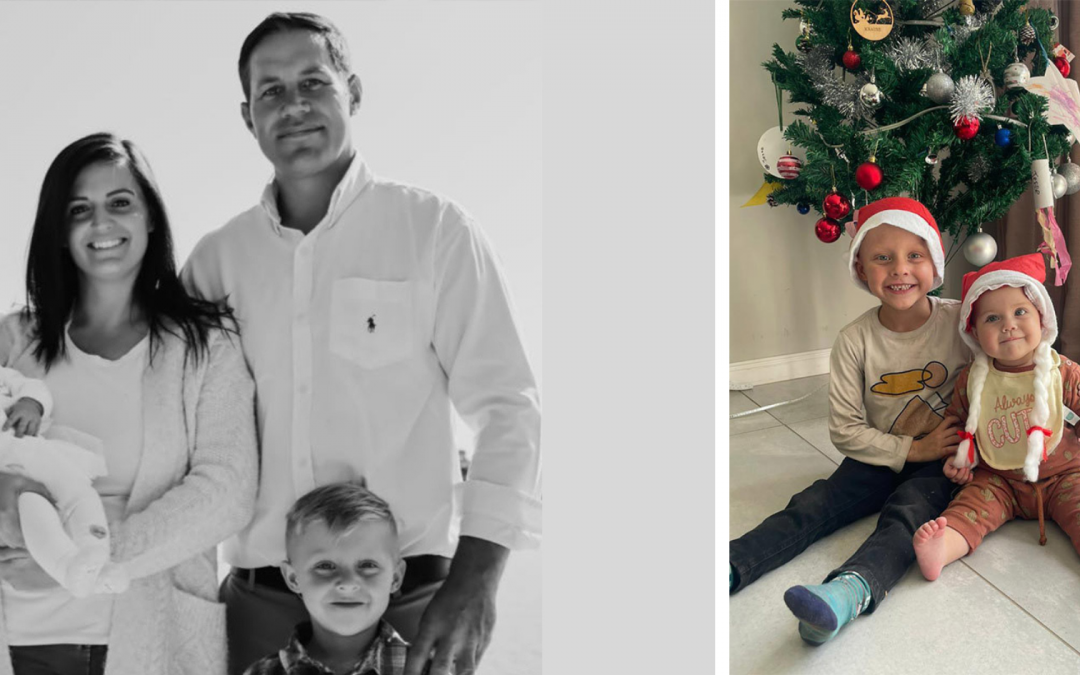
by Tessa Van Rensberg | Dec 3, 2025 | Campaign, Featured
Benoni, South Africa — Two young siblings, 21-month-old Sadie Krause and her six-year-old brother Jesse, have been diagnosed with one of the world’s rarest immune disorders, DOCK8 Immunodeficiency Syndrome. With the only curative treatment available overseas and costing up to $1million per child, the family is urgently appealing for public support to save their lives.
Sadie and Jesse are among fewer than 300 known DOCK8 cases globally, and specialists believe their diagnoses may be among the first formally identified in South Africa.
“When Sadie and Jesse were diagnosed with DOCK8 Immunodeficiency Syndrome, we discovered just how rare this disease truly is, and how little information exists, especially here in South Africa,” says Dominique Nelson-Esch, aunt of Sadie and Jesse.
“With only 250–300 known cases worldwide, DOCK8 is one of the rarest primary immunodeficiencies in the world. As a family, we have spent months searching for answers, consulting countless doctors, and piecing together information that often wasn’t available in one place.”
Understanding DOCK8
DOCK8 Deficiency is caused by biallelic mutations in the DOCK8 gene — Dedicator of Cytokinesis 8 — responsible for helping immune cells move, adapt, and communicate properly. When the gene malfunctions, the immune system becomes severely compromised.
Children with DOCK8 face:
- Persistent skin and lung infections
- Chronic viral illness
- Severe eczema and allergies
- Higher cancer risk
- Extreme vulnerability to everyday germs
For Sadie and Jesse, this means a daily routine of:
- Weekly immunoglobulin infusions
- Ongoing antiviral and antibiotic medication
- Bleach baths for viral skin disease
- Regular hospital visits
- Strict isolation when anyone is ill
- Home-schooling for safety
- Cancelled outings, birthdays and gatherings
Paediatric pulmonologist and clinical immunologist Dr Ashley C. Jeevarathnum, who is overseeing their care, explains:
“Children with DOCK8 do not have a fully functioning immune system. They are highly vulnerable to severe infections, chronic viral skin disease, progressive lung damage, and certain cancers at a young age. Without definitive treatment, the condition is fatal.”
Even with so much happening around them, Jesse remains kind and watchful, and Sadie’s laughter still fills the room.
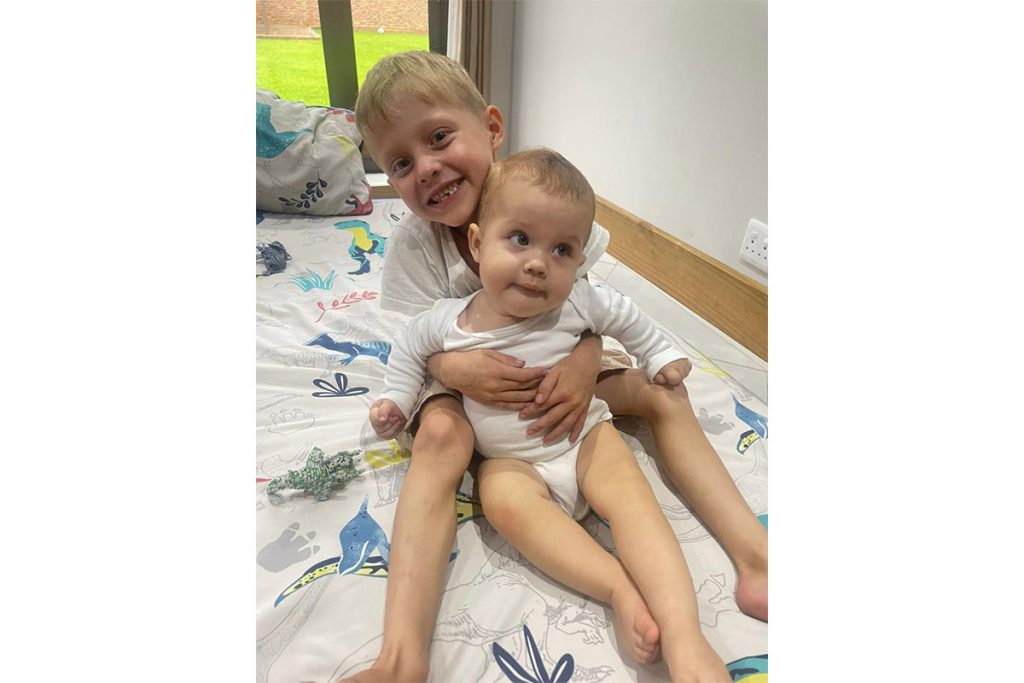
A Diagnosis That Changed Everything
Parents Lee-Ann and Clayton spent years seeking answers as their children battled severe infections, skin complications, and unexplained illnesses.
When the diagnosis finally came, it brought clarity — but also the devastating reality that South Africa cannot provide the only lifesaving treatment their children need.
To help manage the overwhelming medical and administrative demands, the children’s aunts —
Dominique, sister of Clayton and Claire, sister of Lee-Ann established the Sadie & Jesse DOCK8 Foundation.
“It has taken so many childhood moments,” says Dominique. “And yet Jesse remains a gentle, protective big brother, and Sadie’s giggles still light up the room even on the hardest days. Their spirits remind us what’s at stake — the chance to grow up, to dream, and to live the childhood every child deserves.”
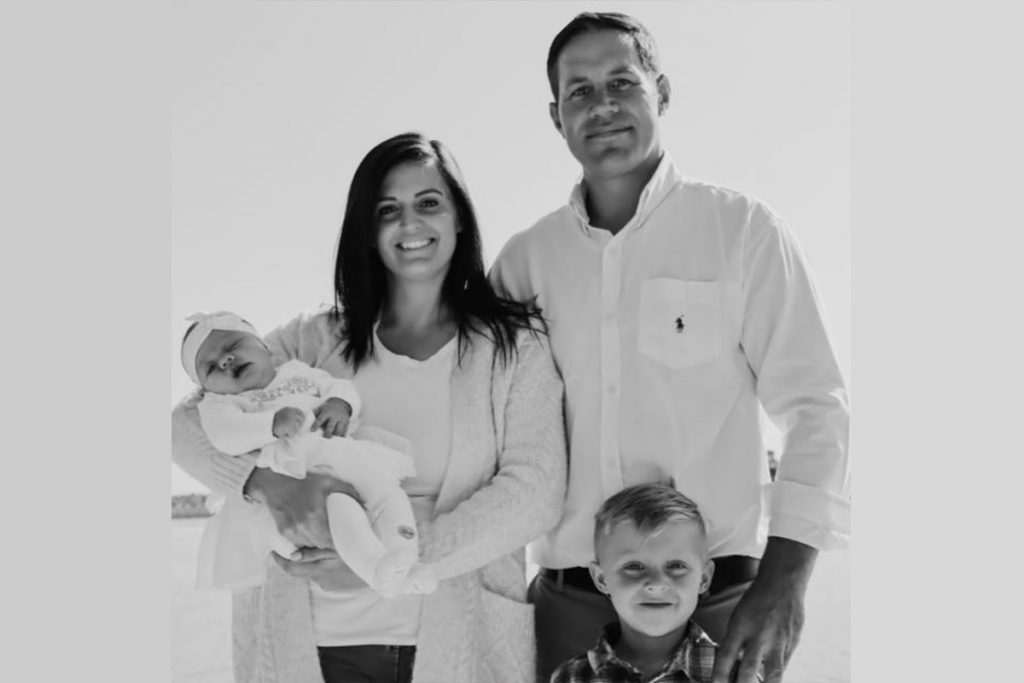
The Only Lifesaving Treatment — Overseas
The only curative treatment for DOCK8 is an allogeneic haematopoietic stem cell transplant (HSCT) — one of the most complex medical procedures in the world.
Due to the condition’s severe rarity, South Africa does not have a formalised DOCK8 transplant programme, and the procedure must be performed at international centres with proven DOCK8 expertise. Most successful transplants have taken place in the United States and Europe, with survival rates of 80–85% when completed early.
The cost, however, is staggering:
R20 million to R30 million per child
“When we learned about the astronomical costs per child, it was terrifying,” says Dominique. “No family can shoulder that kind of cost alone. Asking the public for help wasn’t an easy decision, but it felt like the only way forward and to give the kids a real chance at life.”
The family’s medical scheme has been vague about what they will cover. To date, more than R120,000 has already been paid out-of-pocket just to stabilise the children.
“This is not experimental or optional — in the correct hands, HSCT is curative,” Dr Jeevarathnum emphasises. “The diagnosis is real, the medical situation is urgent, and the funds requested are for proven, lifesaving therapy.”
Community Support Grows
In response to the overwhelming financial burden, Dominique and Claire launched a BackaBuddy campaign that has gained remarkable early momentum.
More than 300 donors have already contributed over R300,000, sending messages of love, encouragement, and prayer.
“With grateful hearts — to everyone who has followed Jesse and Sadie’s journey, shared their story, sent words of encouragement, or given so generously, thank you,” says the family. “Your love and support carry this family through the hardest days.”
Why Every Donation Matters
The financial need extends far beyond the transplant itself, with ongoing costs for weekly immunoglobulin, specialist visits, medication, home-schooling, medical supplies, transport, counselling, and many hidden day-to-day expenses.
“It all adds up,” the family explains. “Every contribution brings them one step closer to the lifesaving transplants they urgently need.”
The public is invited to help Sadie and Jesse receive the urgent medical care they need by donating here:
https://www.backabuddy.co.za/campaign/sadie-jesse-krauses-stem-cell-transplants
All funds go directly toward the children’s treatment and long-term care

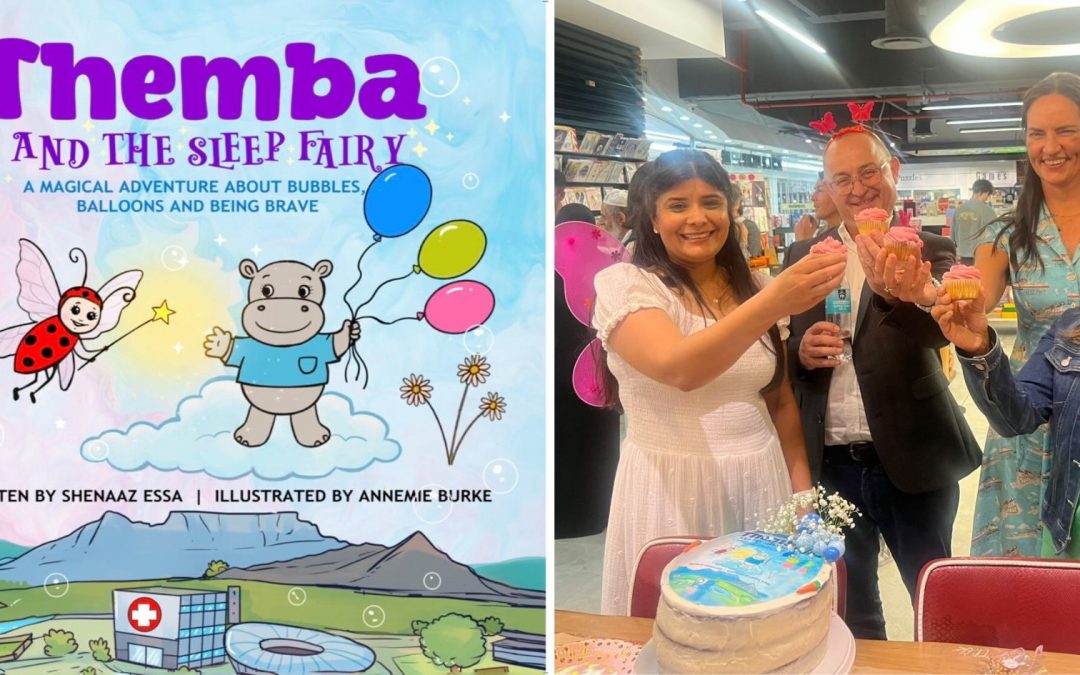
by Tessa Van Rensberg | Nov 18, 2025 | Campaign, Featured
Dr Shenaaz Essa, an anaesthesiologist with a special interest in paediatrics at Tygerberg Hospital in Cape Town, has launched a new storybook and colouring pack designed to help young surgical patients navigate their hospital journey with compassion and warmth.
Recognised as one of the Tygerberg Hospital Children’s Trust’s supported programmes, Themba and the Sleep Fairy Project was created to support children who arrive in theatre frightened and unprepared – a designation that will help extend its reach across public hospitals countrywide.
And now, thanks to a heartwarming matched-funding partnership with Gift of the Givers, every act of kindness is doing double the good, ensuring thousands more children walk into surgery feeling braver, calmer, and more supported than ever before.
Helping Children Understand a Scary Process
In many public hospitals, young patients go into surgery without understanding who they will meet, what the equipment does, or why they need anaesthesia. For a child, that uncertainty can be terrifying – leading to heightened anxiety, higher medication needs, and more difficult recoveries.
“Calm children cope better,” says Dr Shenaaz. “When they understand what will happen, their anxiety drops, and their wake-up experience is much smoother.”
The book gently walks children through the surgical process in age-appropriate language, from the moment they arrive in theatre to the moment they return to the ward.
The book explains the steps of surgery in a clear, age-appropriate way, from the moment a child arrives in theatre to the moment they return to the ward.
Included with each book is a box of crayons so children can colour while waiting, a meaningful addition for many young patients who arrive with no personal belongings.
“Some children arrive with no personal belongings at all,” says Dr Shenaaz. “Giving them something of their own restores dignity, sparks creativity, and helps them feel seen.”
Parents who have used the book say their children arrived at hospital noticeably calmer and more confident – proof of just how powerful small acts of kindness can be.
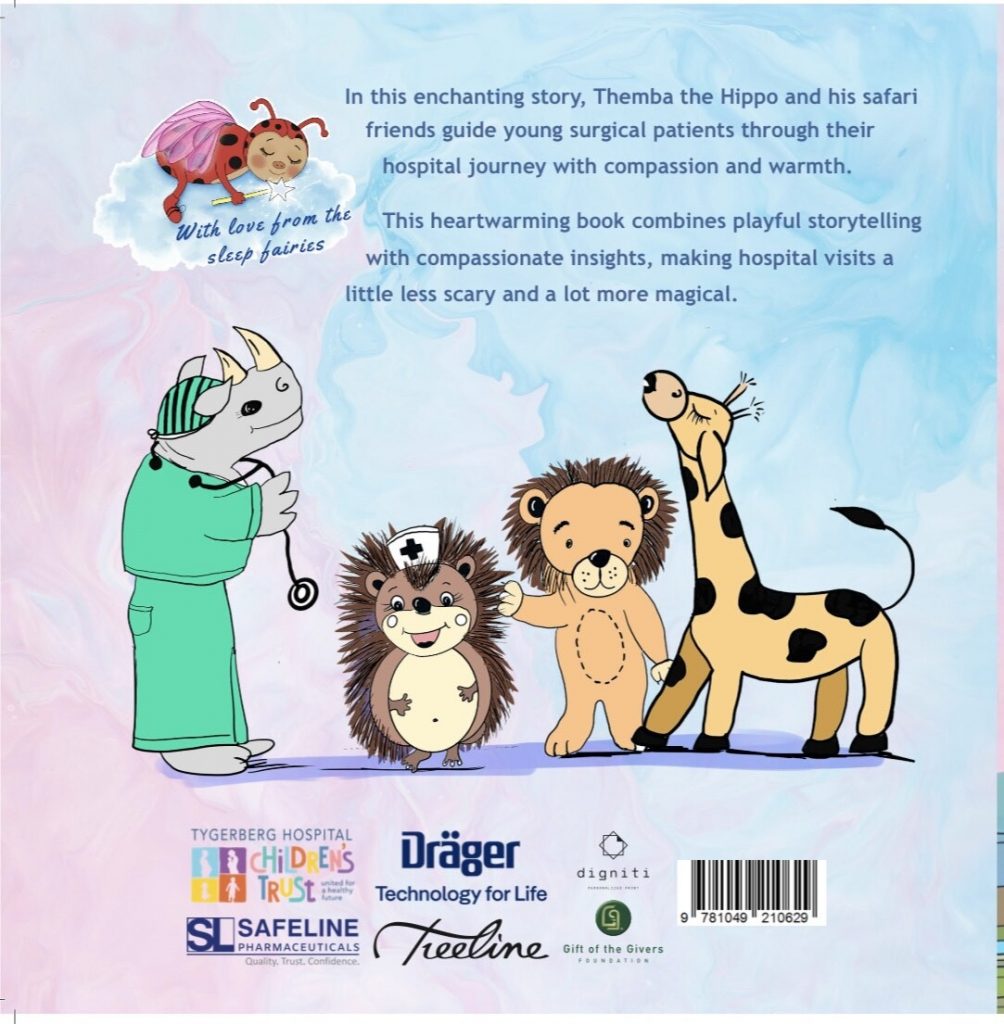
Inspired by What Doctors See Every Day
The project began during Dr Shenaaz’s final month of specialist training. After organising a mural in the recovery area at Tygerberg Hospital, she saw firsthand how a supportive environment can change a child’s entire experience.
Her work in both private and public hospitals revealed the stark contrast between the environments children experience – and how much emotional support is missing in under-resourced settings.
Working with colleagues illustrator Dr Annemie Burke and editors Dr Ramona Ramklass and Dr Graeme Wilson, all experienced anaesthetists, she spent nine months refining the story around the real questions and fears children express before surgery.
But for the team, this project is about more than a book.
“It comes down to dignity and compassion,” says Dr Shenaaz. “Many of these children come from environments where even basic needs aren’t met. Giving them a story, a kind character, or even their own crayons is a reminder that they matter.”
She believes deeply in the biopsychosocial model, emphasising that healing isn’t only physical – mental health, environment, hope, and emotional safety all shape a child’s ability to cope and recover.
“We want to give every child the best chance,” she says. “Sometimes, that begins with the smallest act of kindness.”
Kindness in Action: How One Small Gesture Can Change a Child’s Life
When asked what kindness means to her and her team, Dr Shenaaz offers a deeply human reflection:
“These children are the most vulnerable. A small gesture – a story, a colouring pack, a moment of compassion – can restore dignity and spark hope. Maybe it inspires a future artist, writer, or nurse. Kindness opens up possibilities.”
She recalls being moved by the film Patch Adams as a child – a reminder that the work of healthcare is not only clinical.
“Our impact is not just medical. It’s emotional, psychological, and social. When you give a child comfort, you strengthen every part of them.”
This is the heart of the Sleep Fairy Project – showing children they are valued, cared for, and never alone.
Matched Funding Doubles the Impact
The project’s BackaBuddy campaign has raised R6 000 from 13 donors, toward a R30 000 goal.
Through matched funding by Gift of the Givers:
- R30 supports 2 children
- R300 supports 20 children
- R1 500 supports 100 children
- 1 000 donated books = 2 000 books delivered
The first 2 000 packs are planned for distribution to public hospitals in 2025.
For Dr Shenaaz, seeing this ripple effect has been deeply inspiring.
“I am so privileged to have Gift of the Givers collaborating with us,” she says. “Acts of kindness are contagious. When people see generosity, they want to join in. It releases joy – not just for the giver, but for everyone involved.”
With the festive season approaching, she believes this is the perfect moment for South Africans to uplift children who may receive no other gift at all.
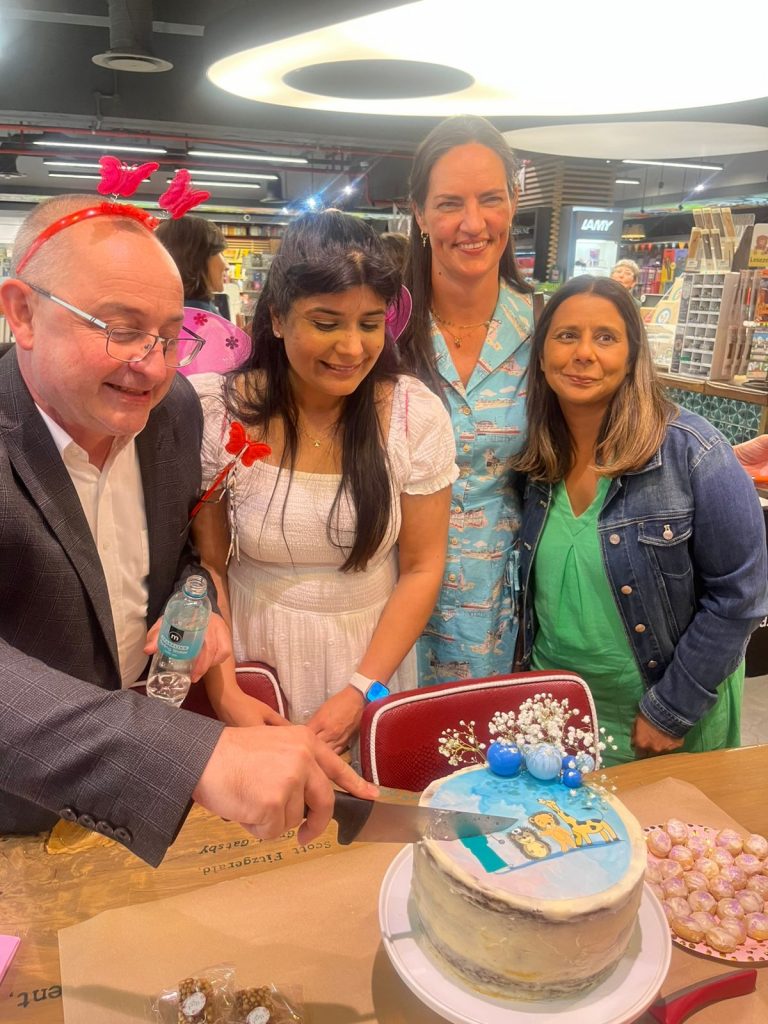
Reaching More Children Across South Africa
To ensure accessibility, the book is being translated into Afrikaans, isiXhosa and isiZulu, with French and Swahili versions underway for broader African use.
“Our goal is simple,” says Dr Shenaaz. “Every child facing surgery deserves to understand what is happening to them.”
Aiming for No Child to Enter Surgery Unprepared
For many young patients, this storybook may be the only emotional support they receive before going under anaesthesia. But with every act of kindness multiplied through matched giving – and with supporters joining hands across the country – that emotional safety net grows stronger.
“A small amount of information can completely change how a child experiences surgery,” says Dr Shenaaz. “Even reducing fear a little is meaningful. And it’s something every child deserves.”
The Sleep Fairy Project proves that kindness doesn’t need to be grand to be powerful.
Sometimes, it looks like a storybook, a crayon, a smile – or a donation that becomes two.
To support the Sleep Fairy Project and help your act of kindness do double the good:
https://www.backabuddy.co.za/campaign/help-themba-and-the-sleep-fairy
Your contribution creates a ripple effect – touching not just one child, but every child reached through matched giving. And that is the true magic of kindness in action.
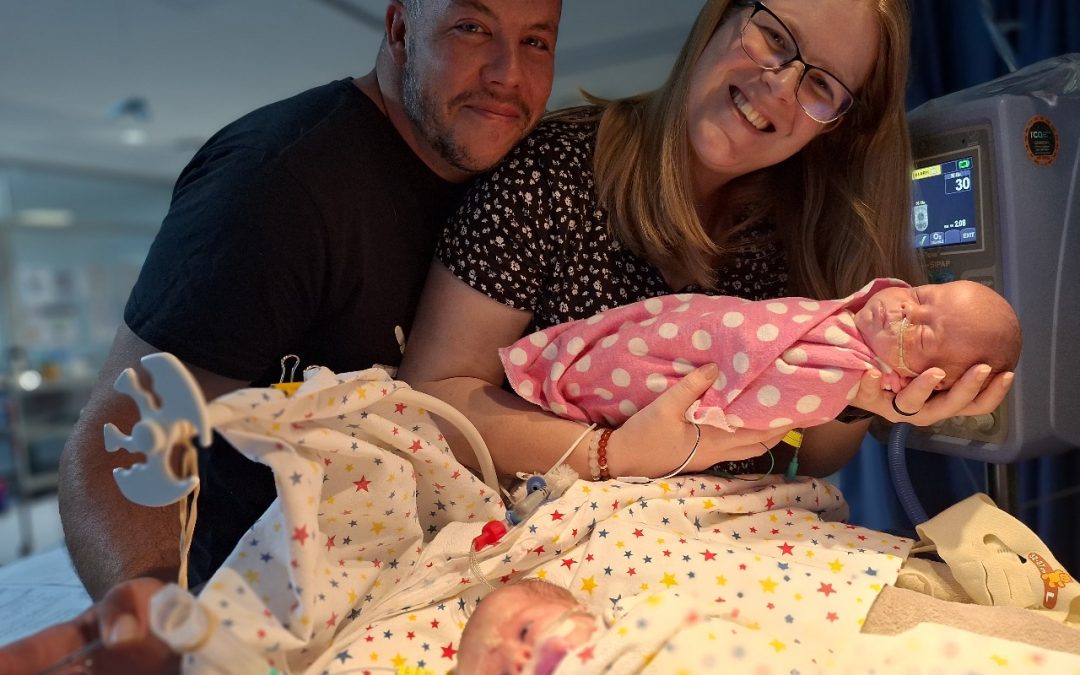
by Tessa Van Rensberg | Nov 14, 2025 | Campaign, Featured
Tiny Miracles: Jenna-Lee’s Journey of Love, Loss, and Hope This World Prematurity Day
Jenna-Lee La Cock (36) from Randpark Ridge, Gauteng, has lived through a journey that reveals the fragility of life – but also the extraordinary strength of a mother’s love. Her path to motherhood began with fertility struggles, continued through a life-threatening pregnancy complication, and today, she stands as the proud mom of two tiny fighters – Selena and Leona NICU Warriors, whose story brings powerful meaning to World Prematurity Day.
A Long and Hopeful Road to Motherhood
For Jenna-Lee and her husband, Uli, the dream of becoming parents began almost as soon as they married.
“Uli and I met a bit later in life, but from the moment I met him, I knew I wanted to have children with him,” she smiles. “We decided to start trying almost straight away.”

But months passed with no positive test. When Jenna-Lee stopped birth control after years of use, her cycle became irregular. A visit to a fertility clinic uncovered the reasons she feared: adenomyosis and anovulation, meaning her ovaries weren’t releasing eggs.
“It was tough hearing that, but we were determined,” she says.
After five rounds of ovulation stimulation, Jenna-Lee finally received the news they had prayed for – a positive pregnancy test.
“As the doctor moved the probe, we saw what looked like two gestational sacs,” she laughs. “The doctor started laughing, and when we realized – we laughed all the way home. Twins! We felt blessed beyond measure.”
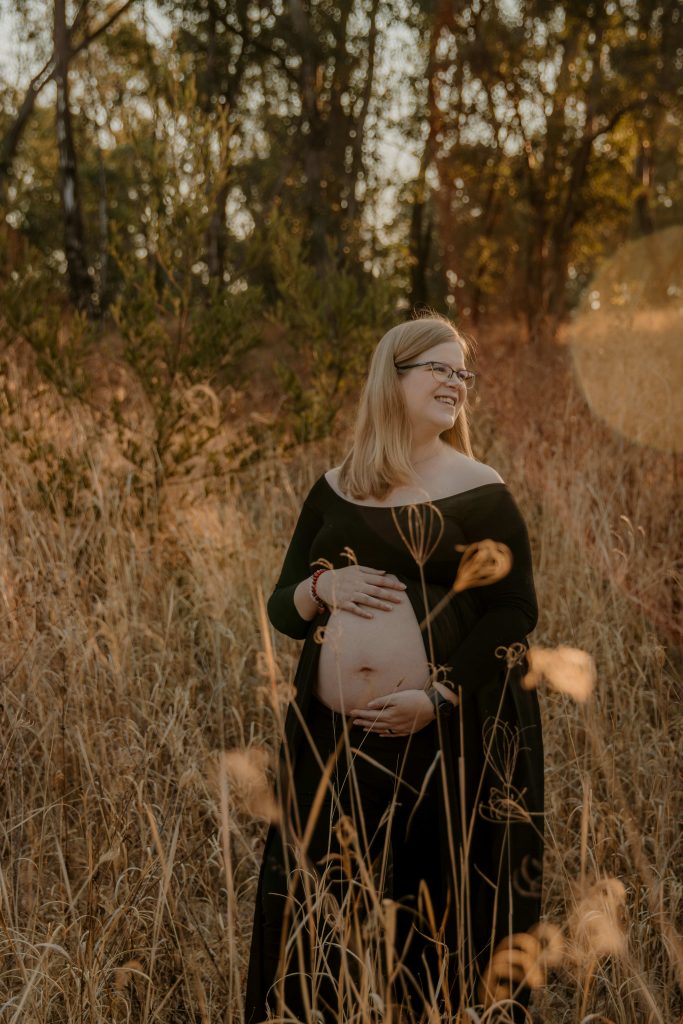
The Day Everything Changed
On 18 August 2025, at 28 weeks and 3 days, Jenna-Lee woke up at 3am in excruciating pain – pain that no medication, no heat, and no shower could ease.
“I got dressed for work but couldn’t get past the agony. I woke Uli in tears, and we rushed to the gynecologist as soon as they opened.”
Blood tests revealed dangerously low platelet levels. Hours later, the diagnosis confirmed their worst fears: HELLP syndrome, a life-threatening pregnancy condition affecting the liver and blood. The only way to save Jenna-Lee and the twins was to deliver immediately.
“I went cold,” she remembers. “I kept thinking, ‘It’s too early – they’re too little.’ I was terrified and heartbroken, but I knew we had no choice.”
Because of the bleeding risk, she couldn’t receive an epidural or spinal block and had to undergo a C-section under general anesthesia.
“I drifted off praying for their safety,” she says softly.
When she woke up in recovery – weak and needing a blood transfusion – she learned that both babies had survived. They were tiny, fragile, and fighting for their lives.
Our Little NICU Warriors
Tiny but fierce, Selena (1.11kg) and Leona (1.1kg) began their journey as NICU warriors.
“Selena needed resuscitation and a ventilator. Leona needed CPAP,” says Jenna-Lee. “Selena later needed PDA surgery and battled pneumonia. Leona survived a life-threatening gut infection. They’re the strongest little humans I know.”
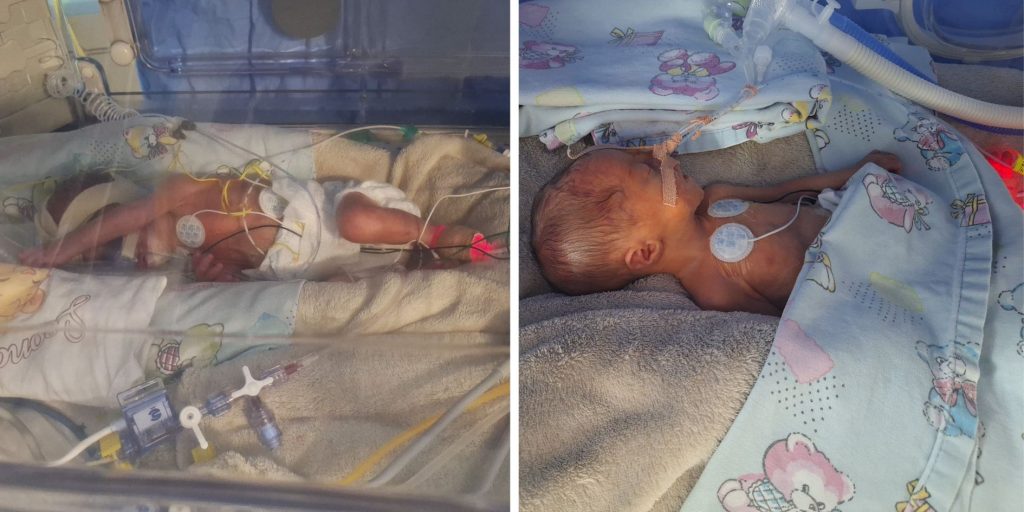
For the first weeks, the beeping of monitors and the hum of ventilators became the soundtrack of their days. Their parents visited daily – sometimes multiple times a day – despite exhaustion, pain, and emotional overload.
Now more than two months later, their journey has taken a new, bittersweet turn.
A Heart in Two Places: The Updated Journey
After more than two months of fighting, the twins’ story reached a painful and beautiful turning point.
On Day 76, baby Selena was discharged, finally strong enough to go home.
“She’s thriving at home,” Jenna-Lee says with a full heart. “Having her home is the biggest blessing.”
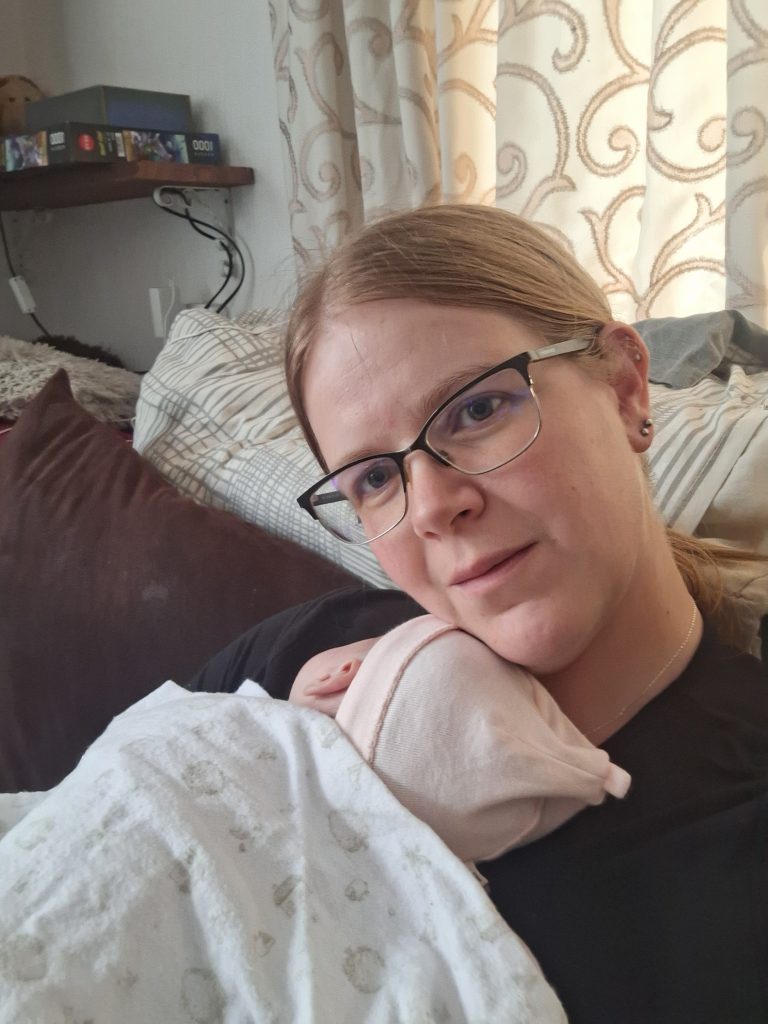
Selena at home with mum
But her younger sister is still in the NICU.
On Day 82, Leona continues to struggle with bottle feeding – something she must master before she can be safely discharged.
“We have tried everything – speech therapy, occupational therapy, paediatric advice, NICU nurses’ tricks, and every bottle on the market,” says Jenna-Lee. “We haven’t found the solution yet.”
This emotional split has been devastating.
“It feels like your heart is broken into two pieces, and you cannot have both pieces together yet,” she admits. “Visiting your child, loving her, holding her – and then leaving her behind every evening – it’s a pain I can’t fully describe.”
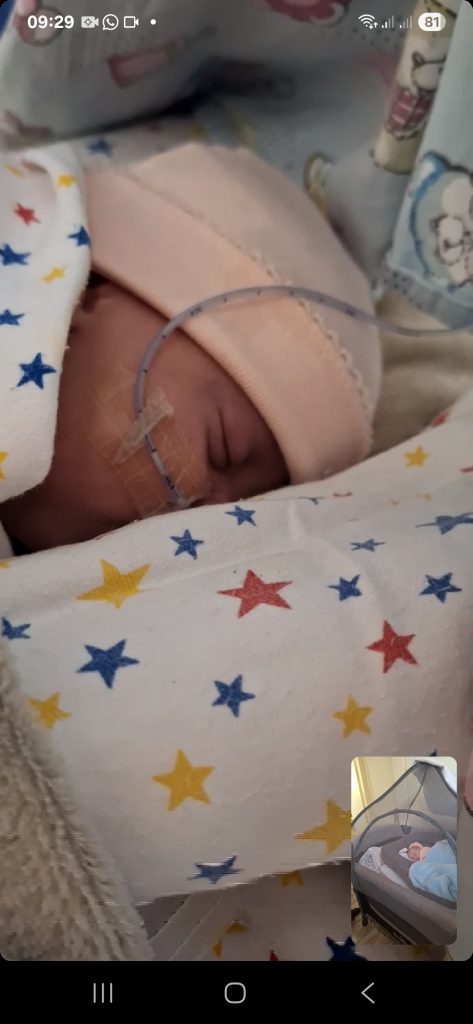
Keeping their hearts together: a video call from the NICU to home brings comfort and closeness
Meanwhile, the next chapter has begun:
out-patient appointments and therapies, which their medical aid no longer covers because their savings are depleted.
“We want the best care for our girls, but we simply don’t know how we’ll afford what’s still ahead,” she says.
The Weight of Financial Strain
The financial pressure on the family has been immense.
- Their medical aid has disputed parts of Jenna-Lee’s hospital stay.
- Some claims for the twins’ care have been rejected.
- Uli lost his income for August while supporting his family at the hospital daily.
- Jenna-Lee is on maternity leave earning half her salary.
- UIF benefits are uncertain and limited.
- Additional unpaid leave will likely be necessary when both girls are home.
“This experience has brought so much fear and uncertainty, but every moment is worth it for my girls,” she says.
Community Compassion Through Crowdfunding
To help ease the growing financial burden, Jenna-Lee created a BackaBuddy campaign titled “Selena and Leona, Our Little NICU Warriors.”
So far, 15 donors have contributed R27,198 toward their R75,000 goal.
“The kindness we’ve received has lifted us up,” she says. “Prayers, food, messages, donations – every act of love has given us strength to keep going.”
A Message for World Prematurity Day – 17th November
This story unfolds as families around the world honour World Prematurity Day, a day dedicated to raising awareness for babies born too soon and the families who walk the NICU journey.
“Premature birth isn’t something you plan for – it’s something you survive,” says Jenna-Lee. “These babies are miracles. Their strength is unmatched. And parents in the NICU hold their fear, love, and hope all at once.”
Her message to other NICU parents is gentle and full of encouragement:
“It’s okay to have bad days. Don’t hide your struggles. But when you walk into that NICU, try to leave the fear at the door. Focus on love- that’s what your babies need most.”
Motherhood, she says, has changed her life forever.
“Being a mom to my beautiful girls makes me want to hand them the world. My purpose now is to guide them, protect them, and cheer them on as they grow into the strong women I already see in them.”
From a long fertility struggle to the emergency delivery of her twins at 28 weeks, from NICU alarms to first cuddles, from fear to fierce love – Jenna-Lee’s journey is a story of hope and unshakeable strength.
As one daughter settles at home and the other fights to join her, the family continues to rely on the kindness of those who believe in their story.
This World Prematurity Day, their journey reminds us that even the smallest babies can inspire the biggest courage.
To support Jenna-Lee, Uli, and their two little NICU warriors, visit their BackaBuddy campaign link here: https://www.backabuddy.co.za/campaign/selena-and-leona-nicu-warriors
Please share their story – because sometimes, a single share can bring a tiny miracle closer to home.

by Tessa Van Rensberg | Nov 12, 2025 | Campaign, Featured
Photo credits: Gift of the Givers
Building Sustainable Support for Those Who Need It Most
[Cape Town, 11 November 2025] — Gift of the Givers has announced the launch of Team Gift, a new monthly giving programme powered by BackaBuddy, designed to generate steady and sustainable support for their life-saving humanitarian work both locally and across the globe.
In a world where crises strike more often and with growing intensity, from conflict and hunger to drought and disaster, Team Gift gives ordinary South Africans a way to stand together consistently, ensuring no one is left behind when hardship hits.
Hope That Never Fades
Disasters, poverty, and limited access to healthcare continue to affect millions each year. Team Gift was created to provide consistent, reliable support, ensuring that when emergencies arise, help can arrive without delay.
The programme’s sustainable funding model allows Gift of the Givers to respond faster, plan further ahead, and maintain essential care long after initial relief efforts have ended.
From a Riverbed in Mozambique to a Movement of Hope
The inspiration behind Team Gift reaches back to 1990, when a young Dr Imtiaz Sooliman travelled with the Islamic Medical Association to Mozambique during a time of war and drought.
While visiting Nacala Hospital, he noticed two frail children digging into a dry riverbed and drinking the muddy water that seeped through the soil. The image stayed with him, a painful reminder of how easily we take clean water and safety for granted, and how deeply ordinary people can suffer in times of crisis.
Determined to act, Dr Sooliman wrote about what he had witnessed and shared it through phone calls and fax machines, his version of crowdfunding at the time. Within just five days, friends and colleagues helped him raise $100 000 (USD), enough to provide 30 boreholes and vital malaria medication.
That first humanitarian mission became the foundation for Gift of the Givers, proving that when people unite around compassion, extraordinary things happen.
Today, more than three decades later, that same spirit of unity and collective giving lives on through Team Gift, a call for South Africans to join a community of monthly donors ensuring the organisation remains ready to respond whenever and wherever help is needed.
How Team Gift Works
From as little as R50 per month, donors can pledge recurring contributions via BackaBuddy, joining a growing global movement of consistent givers. All donations are pooled and distributed across Gift of the Givers’ key humanitarian projects, supporting food security, sanitation, healthcare, education, disaster response, and more.
Because the funding is stable and recurring, Gift of the Givers can plan ahead, reach further into crisis zones, and sustain life-saving support long after the headlines fade.
To celebrate the spirit of collective compassion, the organisation is calling on supporters around the world to be among the first 1 000 members of Team Gift — a founding community of monthly donors recognised for their commitment to ongoing, measurable impact.
Founding Member Benefits
When individuals join Team Gift as Founding Members, they will gain access to a range of exclusive benefits designed to bring them closer to the organisation’s life-saving work.
Founding Members will receive live, real-time updates through the Team Gift WhatsApp Community, including direct messages, photos, and videos from Gift of the Givers’ relief teams on the ground, offering a rare, behind-the-scenes view of humanitarian action in progress.

Photo credits: Gift of the Givers
Why Now
Unpredictable crises demand reliable compassion. Too often, projects fade once immediate relief ends, leaving communities vulnerable. Team Gift closes that gap, turning one-time generosity into continuous care.
Ronelle Mungaroo, Communications Manager at Gift of the Givers, explains:
“Team Gift represents the heart of our mission — a community of consistent givers who ensure that when the next crisis arrives, we are already prepared. Every monthly donation, no matter the size, helps sustain the lifeline that keeps hope alive.”
Catherine Swanepoel, Chief Growth Officer at BackaBuddy, adds:
“Recurring giving is one of the most powerful ways South Africans can make an impact. Through Team Gift, BackaBuddy is proud to support Gift of the Givers in building a community of everyday heroes who make long-term humanitarian work possible.”
Join Team Gift, Become a Founding Member
Gift of the Givers and BackaBuddy invite South Africans to transform compassion into action by joining Team Gift today.
About Gift of the Givers
Founded in 1992, Gift of the Givers is Africa’s largest disaster response NGO. The organisation has delivered more than R6 billion in humanitarian aid across 47 countries. Its wide-ranging projects include food security, water provision, healthcare, education, and disaster relief, as well as infrastructure improvements in disadvantaged South African schools and rapid local disaster response efforts that strengthen resilience at home and abroad.
The Gift of the Givers Foundation is the largest disaster-response non-governmental organisation of African origin on the African continent. The essence of its presence is to bring hope and restore dignity to the most vulnerable.
About BackaBuddy
BackaBuddy is South Africa’s leading crowdfunding platform, enabling individuals and organisations to raise funds securely for causes they care about.
Since its inception, BackaBuddy has helped raise over R610 million for thousands of campaigns across South Africa — supporting individuals, families, and charities in times of need.
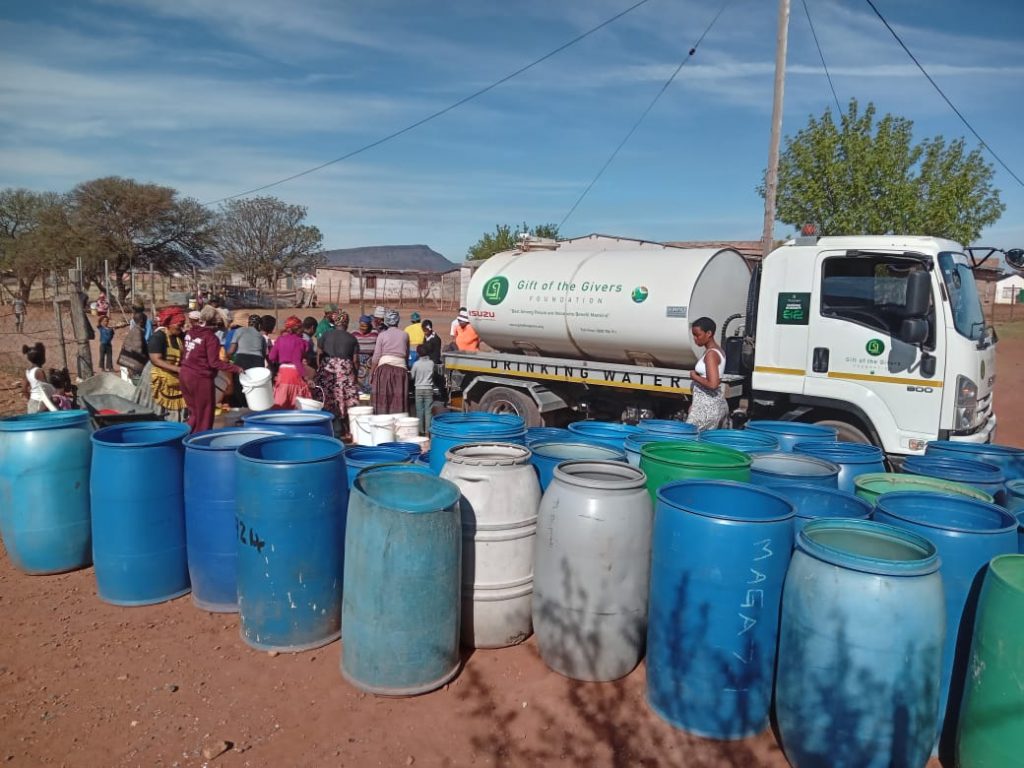
Photo credits: Gift of the Givers
By powering recurring donations, BackaBuddy helps South Africans sustain meaningful change and provide steady support for critical initiatives like Team Gift.

















